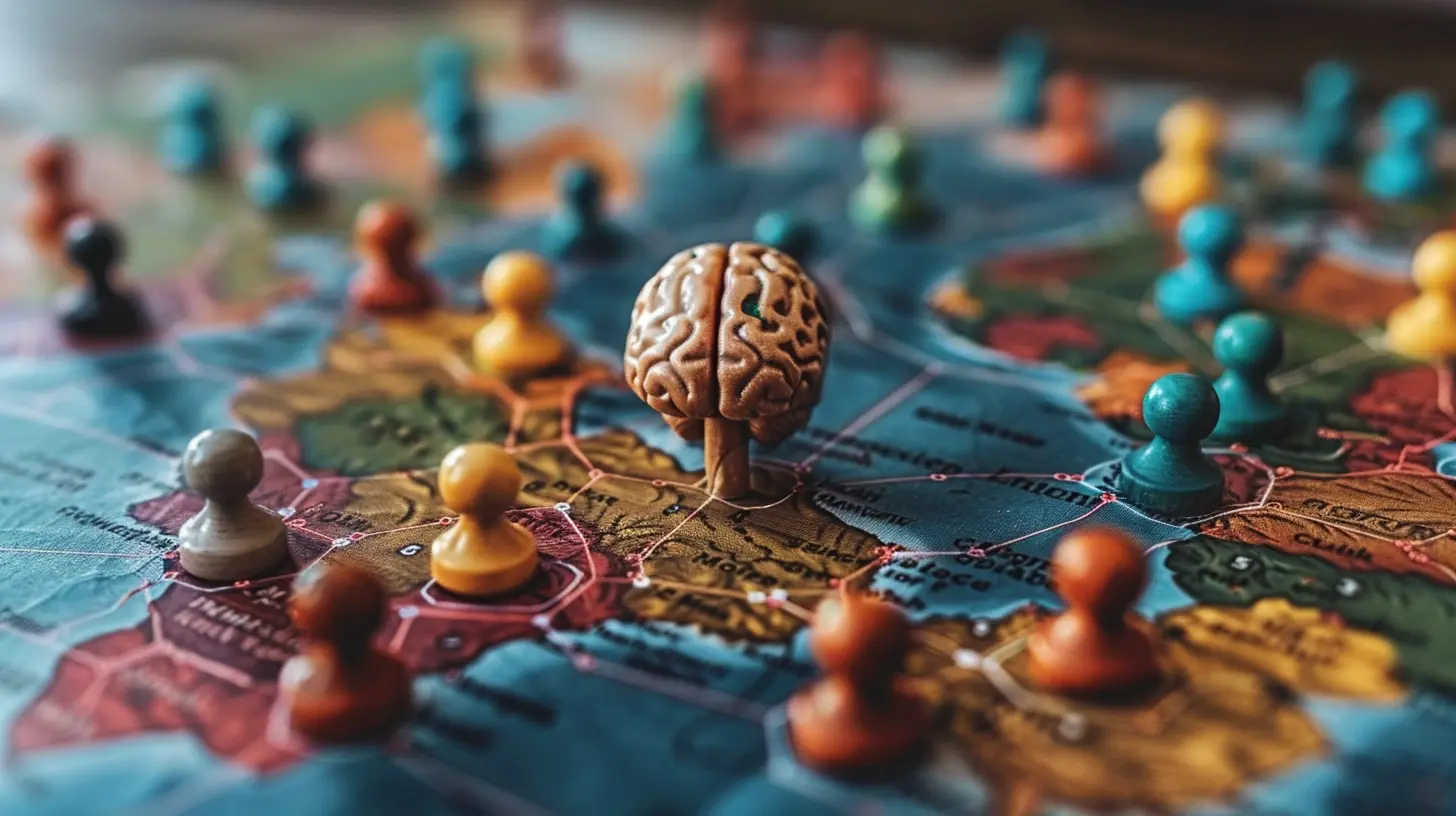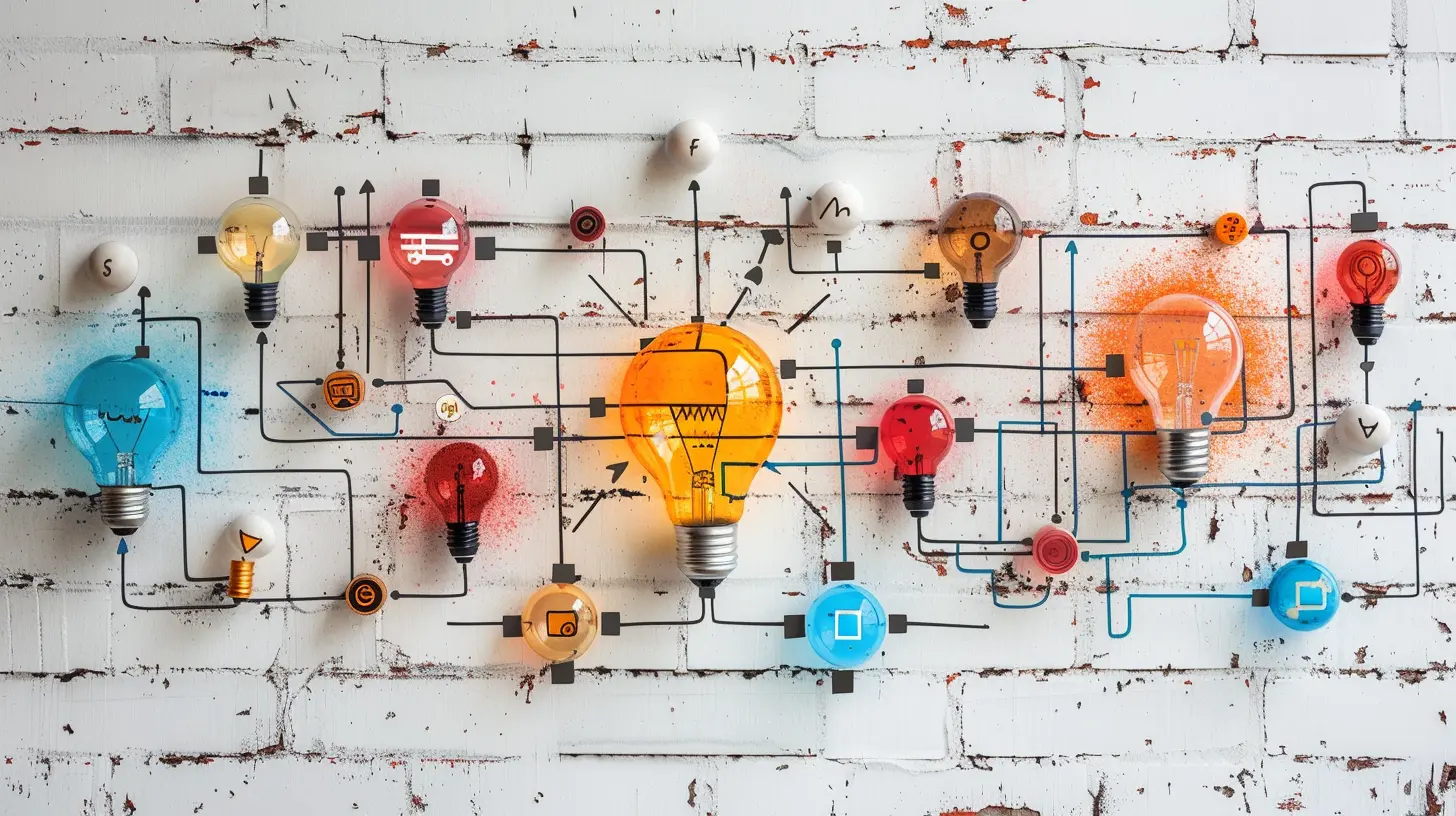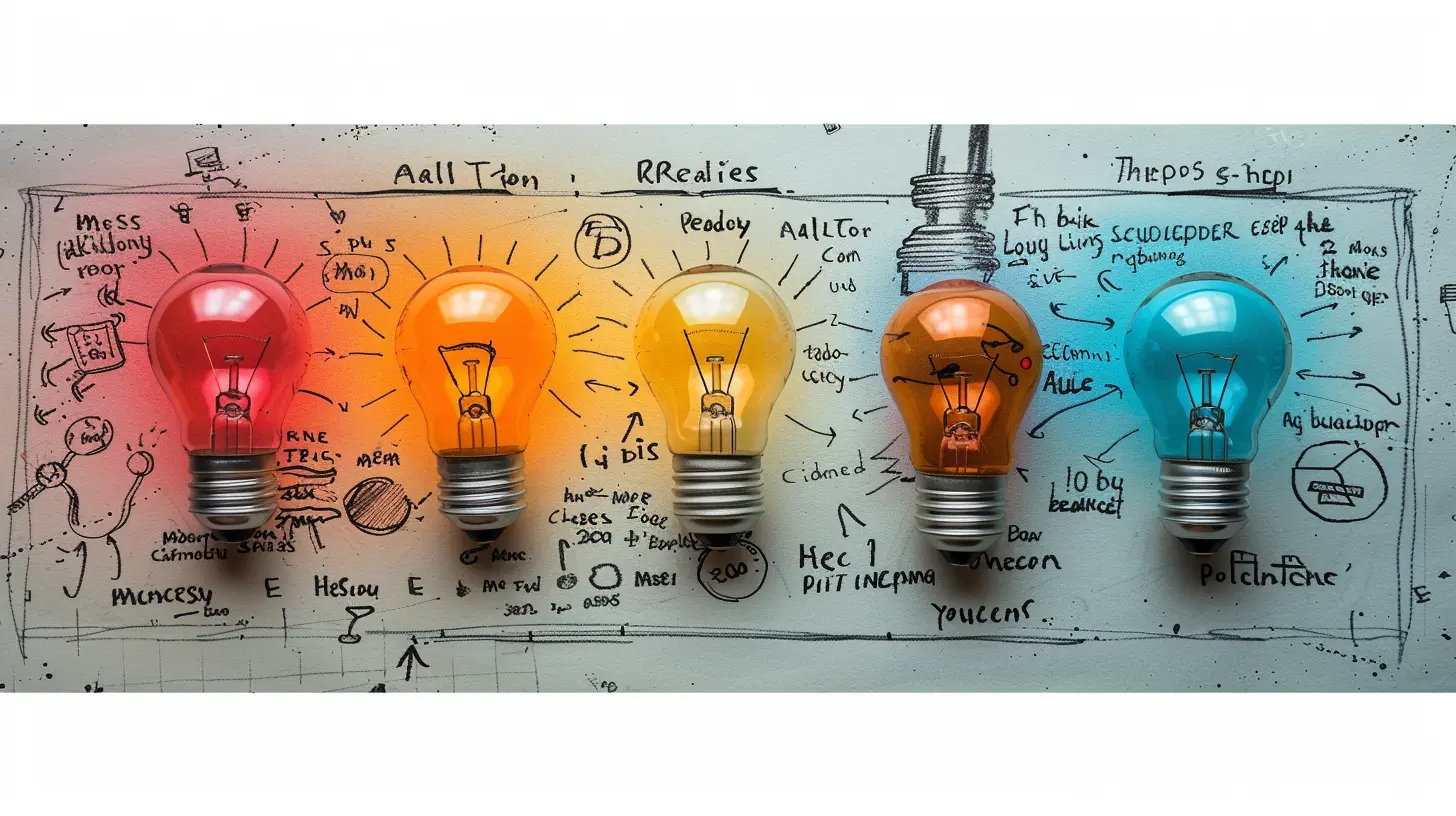How to Use Mind Mapping to Improve Problem-Solving Abilities
26 July 2025
Ever feel like your brain is juggling too many thoughts at once when trying to make a decision or fix a problem? Yeah, we’ve all been there—staring at a blank page, feeling completely stuck. If that sounds familiar, you’re going to love mind mapping. It’s like giving your brain a GPS system for navigating complex problems. Let’s dive deep into how you can use mind mapping to boost your problem-solving abilities and finally stop those mental roadblocks from slowing you down.

What Is Mind Mapping, Anyway?
Imagine your thoughts as a tangled ball of yarn. Mind mapping takes that messy ball and untangles it, making it easier to follow and understand. Technically speaking, a mind map is a visual tool that organizes information around a central idea. You start with your core problem in the middle, then build branches outward with related ideas, thoughts, causes, or possible solutions.It’s like taking your brain dump and turning it into a structured visual guide.

Why Should You Use Mind Mapping?
Before we get into the “how,” let’s talk about the “why.” What makes mind mapping so effective when it comes to problem-solving?- It boosts creativity: Mind maps unlock ideas you didn’t even know you had. When you see your thoughts on paper, connections start forming.
- It enhances memory: Visual layouts stick better than plain text. Seriously, your brain loves images and patterns.
- It encourages deep thinking: Seeing all angles of a problem laid out visually helps you approach it from every direction.
- It reduces overwhelm: Problems feel less scary when you break them into bite-sized pieces.
- It’s flexible: You can use it for personal decisions, academic work, projects, or even brainstorming your grocery list.
Now that we’re on the same page, let’s explore how you can start applying this powerful tool today.
Step 1: Identify Your Core Problem
The first step of any mind map is figuring out what you're trying to solve. This becomes the heart—the center—of your map.Let’s say you’re struggling with time management. Write “Time Management” smack in the middle of your page or digital canvas. Circle it. That’s your central node.
This central idea anchors the entire map. Every branch will relate back to this one concept.
Pro Tip: Keep it short and simple. One or two words. You want clarity, not clutter.
Step 2: Create Main Branches (The Big Picture)
Now, draw 4–6 thick branches extending from the center. These are your main categories. Think of them as the big buckets or themes related to your issue.For example, with “Time Management,” your branches could be:
- Daily Routine
- Distractions
- Prioritization
- Tools & Apps
- Goals
- Energy Levels
Each of these opens up a new layer of detail. You’re now visually segmenting your problem into manageable parts.
Step 3: Add Sub-Branches (Get Granular)
From each of your main branches, draw thinner branches that dive deeper. This is where you unearth the real gold. These sub-branches can include:- Questions
- Obstacles
- Ideas
- Resources
- Solutions
Let’s say under "Distractions," you might add:
- Social media
- Notifications
- Multitasking
- Noisy environments
Already, patterns may start to emerge. You’ll begin to see which distractions impact your time the most and which are easier to fix.
Feeling stuck? Ask yourself: “Why is this happening?” or “What’s causing this?” That usually gets the ideas flowing fast.
Step 4: Use Colors, Images, and Symbols
Yes, this step is optional—but highly recommended. Adding visuals helps your brain process the information more effectively.- Use different colors for each main branch.
- Draw small icons or doodles.
- Add sticky notes or emojis if you're using a digital tool.
This adds a fun, artistic layer. Plus, studies show visuals improve recall and make abstract thoughts easier to understand.
Step 5: Analyze and Reflect
Once your map looks fleshed out, take a step back and look at the big picture. Do any patterns stand out? Do you notice any areas that are overloaded—or too thin?Ask yourself:
- What’s the root cause of this problem?
- What’s the easiest branch to tackle first?
- Are there any quick wins?
- Which parts are out of your control?
You’ll likely see things you didn’t realize before. That’s the beauty of visualization—it gives you perspective.
How Mind Mapping Enhances Problem-Solving Abilities
Let’s connect the dots between mind mapping and problem-solving. Here's how mind maps directly improve your ability to find solutions.1. Helps You See the Whole Picture
Problems are rarely one-dimensional. A mind map spreads everything out in front of you. You’re less likely to miss critical details or jump to conclusions because you have all the facts right there—like a roadmap.2. Sparks New Connections
You know those “aha!” moments that seem to pop out of nowhere? Mind maps make that possible. Seeing ideas visually side-by-side can trigger creative connections and hidden solutions.3. Clears Mental Clutter
Our brains weren’t designed to juggle tons of ideas at once. That’s why ideas evaporate when you don’t write them down. A mind map parks everything in one place so your brain can focus on solving—not remembering.4. Encourages Non-Linear Thinking
Most problems aren’t solved in a straight line. Mind mapping allows your thoughts to jump around, explore sideways ideas, and double back—just like how real problem-solving works.5. Builds Confidence
Once you’ve got a full-blown mind map staring back at you, the issue doesn’t feel so gigantic. You’ve broken it down, organized it, and started forming a plan. That’s empowering.When to Use Mind Mapping
Wondering if mind mapping is right for your specific situation? Honestly, it's crazy versatile. Here are a few scenarios where it shines:- Studying for exams: Map out subjects, key concepts, and deadlines.
- Writing essays or projects: Organize themes, arguments, and sources.
- Personal growth: Explore goals, habits, and roadblocks.
- Team brainstorming sessions: Everyone can contribute ideas visually.
- Career planning: Lay out strengths, weaknesses, and action steps.
If you’ve got a problem and a pen (or a keyboard), you can make a mind map.
Digital vs. Paper: Which One's Best?
Don’t stress about the “right” way to mind map. Both digital and paper versions get the job done.- Paper: Great for quick brainstorming, creative flow, and fewer distractions.
- Digital: Ideal for collaboration, easy editing, and adding multimedia.
Some awesome digital tools include:
- XMind
- MindMeister
- Coggle
- Miro
- Lucidchart
Try both. See what clicks. It’s a personal choice.
Common Mistakes to Avoid
Let’s keep it real—there are a few rookie mistakes a lot of us make when we’re just getting started. Here's what to watch for:- Overcomplicating things: Don’t try to cram your whole life into one map. Keep it focused.
- Writing full sentences: Stick to keywords or short phrases. This saves space and keeps things snappy.
- Forgetting to review: A map is just a tool. You still need to reflect on it and act on what you find.
- Using only one color: Boring and not brain-friendly. Color adds life and meaning.
Final Thoughts: Mind Mapping Is Your Brain’s Best Friend
At the end of the day, mind mapping is more than just doodling—it’s about thinking better. When you're struggling to solve a problem, it gives you the structure to break it down and the freedom to explore creative solutions.So next time you hit a mental wall, grab your notebook or fire up an app and start mapping it out. It might just be the most powerful step you take toward clearing the fog and finding clarity.
And hey—once you get the hang of it, you’ll wonder how you ever thought without it.
Frequently Asked Questions
Q: Do I need any special tools to start mind mapping?A: Nope! Just a pen and paper or any free online mind mapping tool will do the trick.
Q: How long should a mind map session take?
A: It depends! A quick one might take 15–20 minutes, but deeper maps could take an hour or more.
Q: Can kids use mind mapping?
A: Absolutely. In fact, it’s a great way for students to improve study habits and creativity.
all images in this post were generated using AI tools
Category:
Problem SolvingAuthor:

Monica O`Neal
Discussion
rate this article
1 comments
Zevros Rosales
This article effectively highlights mind mapping as a powerful tool for enhancing problem-solving skills. By visually organizing information, it fosters clearer thinking and encourages connections between ideas. Integrating this method into daily practices can significantly boost creativity and strategic planning, ultimately leading to more effective solutions in diverse contexts.
August 2, 2025 at 10:18 AM

Monica O`Neal
Thank you for your insightful comment! I'm glad you found the article highlights the effectiveness of mind mapping in enhancing problem-solving and creativity.


